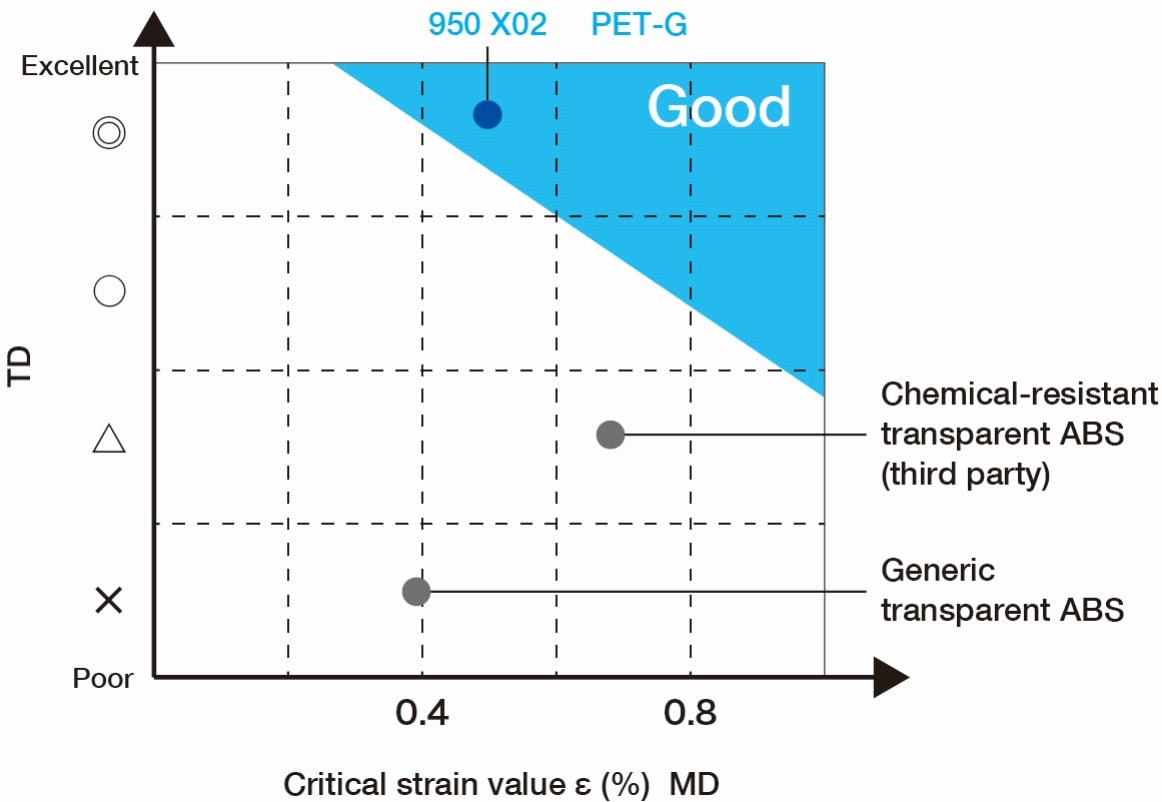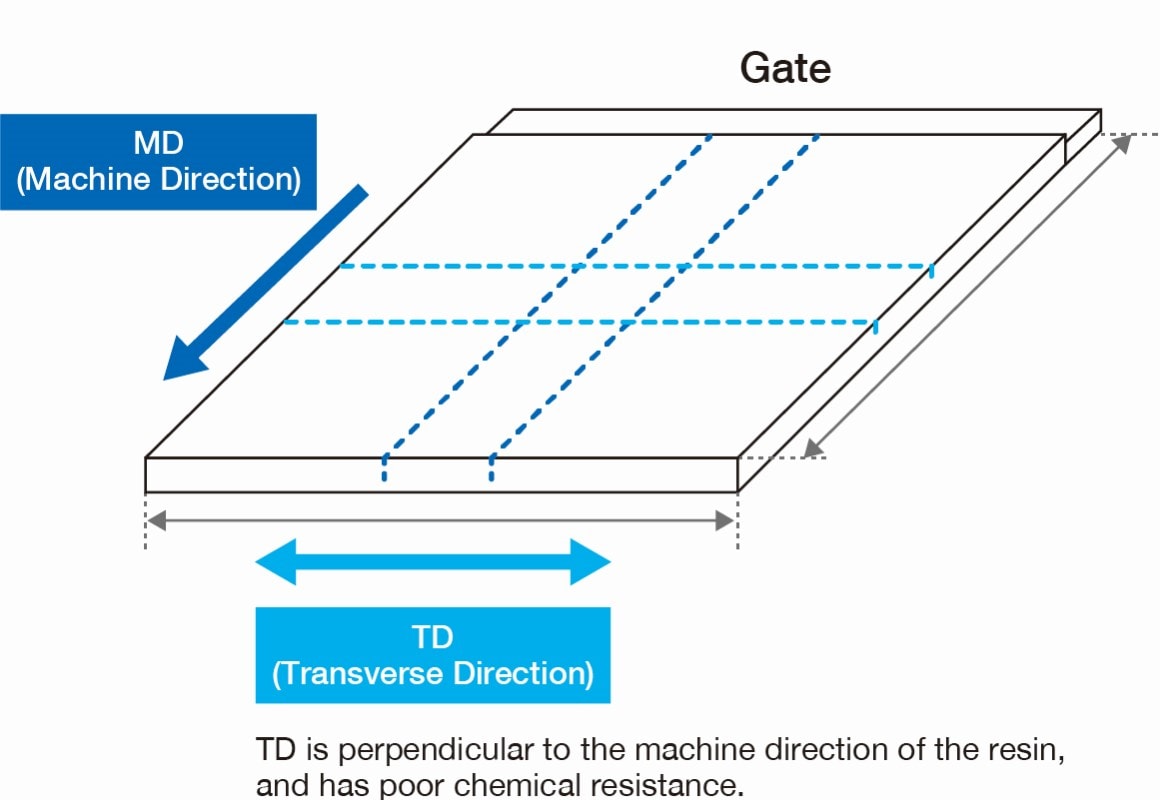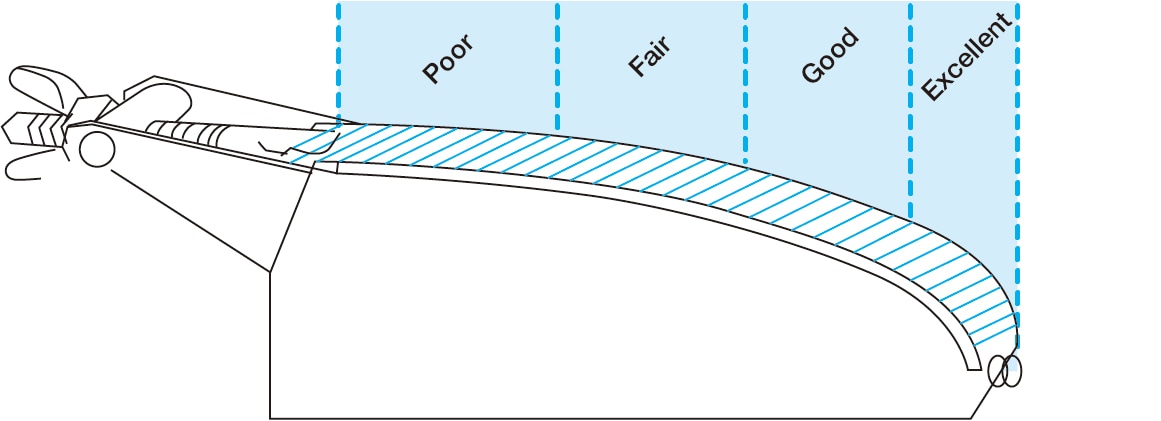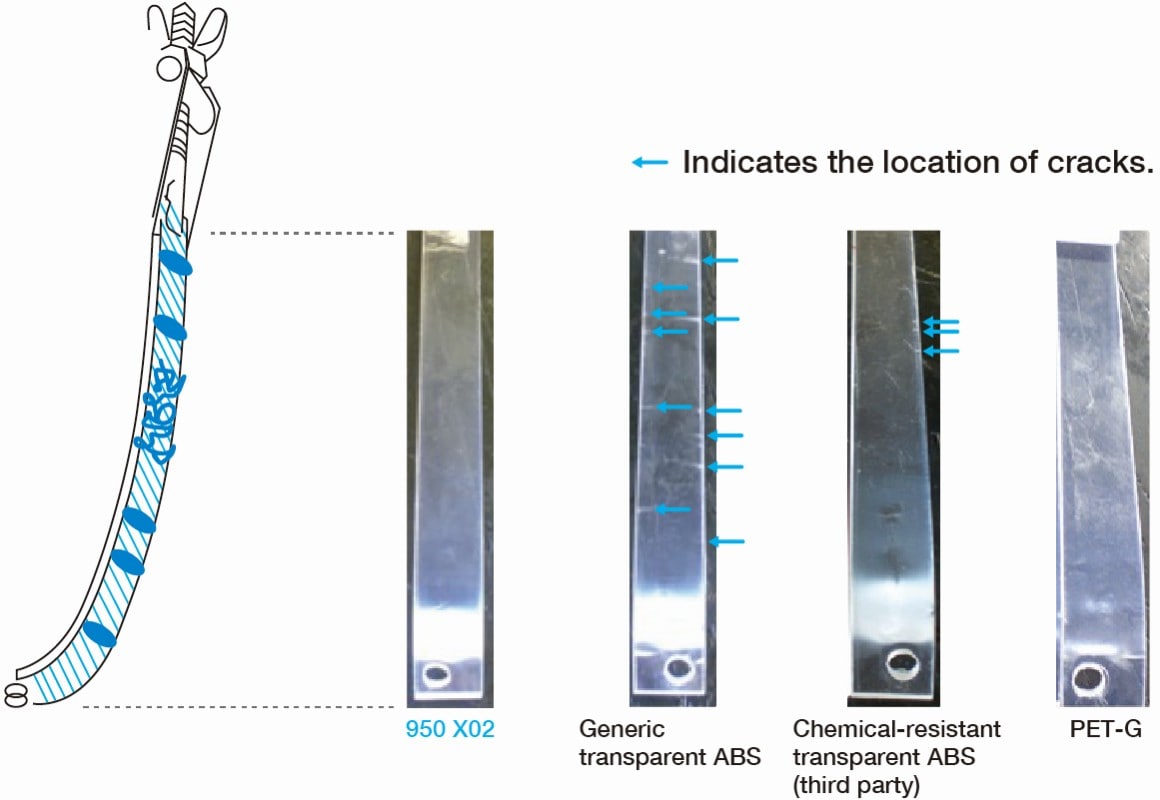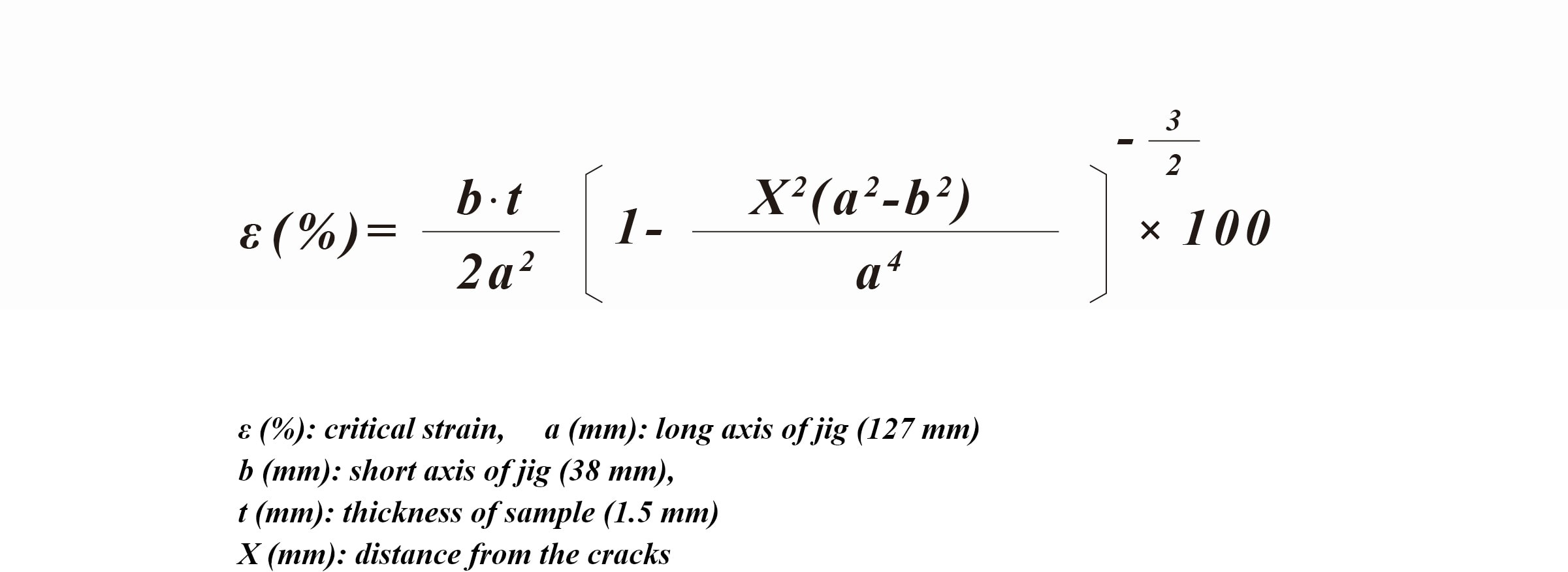- HOME
- Product Information
- ABS resin TOYOLAC™
- TOYOLAC™ 950 X02
Highly Chemical-Resistant and Transparent ABS ResinTOYOLAC™ 950 X02
Highly chemical-resistant and transparent ABS resin TOYOLAC™ 950 X02 is a material designed and optimized to meet the requirements of materials that are required to be transparent and chemical-resistant.
Features
Highly chemical-resistant and transparent ABS resin TOYOLAC™ 950 X02 is an expertly balanced grade that combines the low specific gravity and good moldability that is characterisitc of conventional transparent ABS resin with high-added-value chemical resistance and transparency.
1.Chemical Resistance
Cracking in resin is caused by chemicals penetrating into areas of concentrated stress. TOYOLAC™ 950 X02 reduces chemical penetration by utilizing molecular entanglement through high molecular weight, and intermolecular force through the introduction of functional groups.
There are two directions within molded products: TD (Transverse Direction) and MD (Machine Direction), with TD tending to having weaker chemical resistance. The technology behind TOYOLAC™ 950 X02 significantly improves the chemical resistance of TD products. TOYOLAC™ 950 X02 is the only grade with chemical resistance equivalent to PET-G (which is widely considered to have good chemical resistance), but with comparatively low specific gravity to help save cost and reduce molding defect rate.
(1)Chemical Resistance of 950 X02
(2)Chemical Resistance Evaluation Criteria
① TD Chemical Resistance Evaluation Criteria
The sample is placed on the ¼ elliptical jig (see image) and the chemical resistance test carried out. The quality is judged over four levels (Poor, Fair, Good, and Excellent) based on the location of the cracks (←blue arrows) in the sample.
1/4 elliptical jig chemical resistance testing method
The chemical resistance is determined by the location in which the cracks occur after a set time.
The less the degree of bending at the point where cracks form, the lower the chemical resistance is deemed to be.
Chemical Resistance Evaluation Result
② MD Chemical Resistance Evaluation Criteria
A sample, which has previously been subjected to the ¼ elliptical jig chemical-resistance test (figure), is forcibly bent, and the critical strain value (ε) is then calculated from the location of the cracks occurring on the sample’s surface.
The critical strain value is calculated using the location of the cracks, and the higher the value, the better the chemical resistance.
Equation 1. The equation for calculating the critical strain
2.Transparency
TOYOLAC™ 950 X02 reduces refractive index distribution by matching the rubber and matrix refractive indices, resulting in excellent transparency.
Application Examples
Highly Chemical-Resistant and Transparent ABS Resin TOYOLAC™ 950 X02 is already used by Japanese and international consumer electronics manufacturers as a material suitable for consumer electronics products that need to be chemically resistant and transparent.
- Windows/lids of front-loading washing machines
- Robot vacuum components
- Electric toothbrush casing
